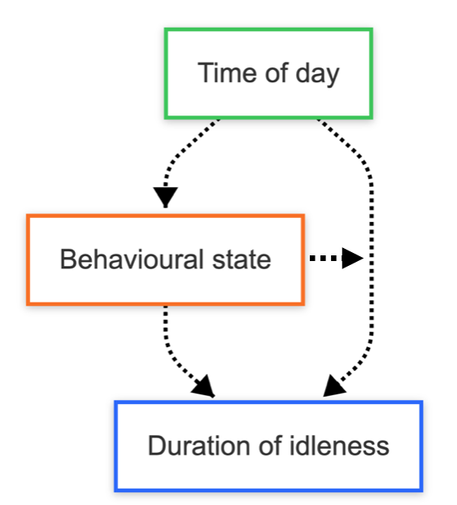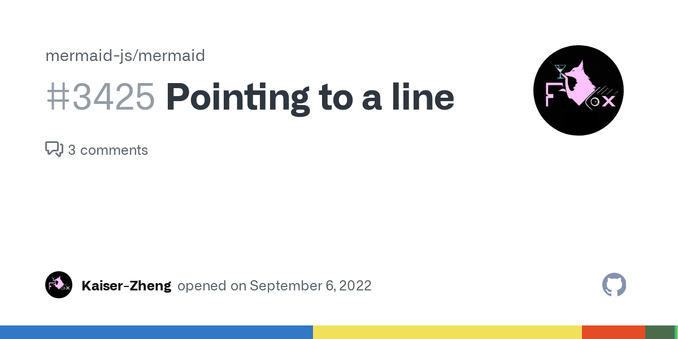I'm trying to graph out some hypotheses that result from a statistical model with #mermaidjs. Trying to do it kinda DAG-style, but I'd really like to be able to visualise the interactions by having arrows from nodes to edges (see issue on GH https://github.com/mermaid-js/mermaid/issues/3425). Do #stats / #rstats people not do this? Or if so, how/where do you make such graphs? Any examples? I had to add the extra arrow manually for now.
As an aside, in this, the "behavioural state" is binary, and has a sort of "gating" effect - ToD has an effect in one state, but no effect in the other. Makes me think in electronic diagrams, but is there a way one would graph it for a causal/statistical diagram?
@roaldarboel I'm still not quite clear about what an arrow from a box to a line actually *means*. Is it better to have boxes for your two behavioural states, and have arrows from them to the appropriate boxes? I say this because there seems not to be *an* effect of behavioural state, but the effect of behavioural state depends on which state you're looking at, sort of like an interaction.
@nxskok There’s both actually. There a direct effect of state, and there’s an interaction - see moderation for examples of what I mean: https://en.m.wikipedia.org/wiki/Moderation_(statistics)

